There are so many different types of kale to choose from, and each and every variety of this health food staple can be both highly nutritious and beautifully ornamental at the same time.
Kale is seen as a superfood, and, like most food trends, tend to find their way into the greenest, healthiest smoothies. However, this humble vegetable should also be showcased for its beauty on your plate. Its moreish and versatile flavours and, of course, its health-boosting powers go far beyond steamed greens.
We will highlight some of the most exciting types of kale to show you just how easy and beneficial they are to include in your garden or veggie patch.
More...
Family: | Brassicacea |
|---|---|
Genus: | Brassica |
Species: | B. oleracea |
Common names: | Leaf cabbage, Kale |
Origin: | Mediterranean and Asian |
Location: | Outdoor |
Type: | Herbaceous perennial, edible |
Growth: | Varies from cultivar to cultivar |
Sun requirements: | Full sun to light shade |
Foliage colour: | Varied |
Flower colour: | Yellow |
Flowering: | Early spring |
Edible parts: | All parts are edible |
Maintenance level: | Low |
Poisonous for pets: | No |
What is Kale?

Kale belongs to the Brassicaceae family, which includes cabbages, broccoli, cauliflower, brussel sprouts and mustards. They are typically known to form leaves but no main ball or head.
A vegetable garden favourite, kale can have different leaf shapes and textures, leaf colours and height, and all give interest in the form of foliage. When mixed in with your garden borders or neatly spaced in your raised beds, kale is handsome and stands strong amongst your planting.
This humble plant helps to bridge a gap in commercial and domestic harvests as it continues to crop during the leaner months, still giving you fresh food from your plot. It has been cultivated in Europe for over 2,000 years before cabbage became more popular and kale lost favour.
Kale’s surge in popularity sees it now being used as microgreens, juiced into smoothies and even made into chips to name a few, each boasting of kale's incredible nutritional value.
What is Kale’s Natural Habitat?
Kale has been eaten since the Middle Ages so its origin is unknown. However, its ability to tolerate low temperatures down to -15°C shows that its heritage must be in colder climates.
Technically kale is derived from wild mustard and is considered to be more closely related to the wild form of cabbage than any of its popular modern relatives. Wild cabbage originates in southwest Europe, in a temperate climate.
Common Uses of Kale
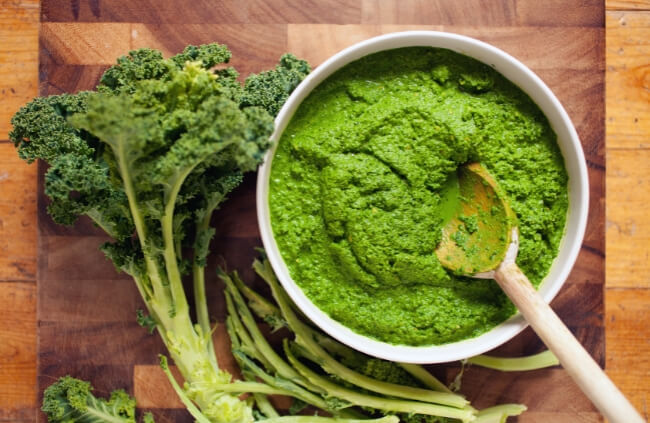
Kale is grown for its edible and nutritious leaves. However, this easy-to-grow vegetable is so much more than a health food fad, and with so many different varieties, kale’s uses are endless.
First and foremost, it’s delicious. Some kale is bred for flavour with many people preferring the red or purple varieties as they can be a little sweeter when eaten raw.
Whereas others prefer the Tuscan black kale or Cavolo Nero with its incredible texture that can hold onto tasty sauces and dressings. They all have their own unique selling points.
The nutritional claims are true; kale is low in calories, high in vitamins C and K and contains several more important nutrients. It is high in beta-carotene, contains lots of other antioxidants and may even lower your cholesterol.
In fact, studies regularly show that including dark leafy vegetables in your regular diet can trigger changes in your DNA slowing ageing, preventing illness and increasing general well-being.


Get Your Free Guide:
Master Growing Australian Natives eBook
A Must Have Complete Guide for Every Australian Garden
Get Your Free Guide:
Master Growing Australian Natives eBook
A Must Have Complete Guide for Every Australian Garden
25 Types of Kale to Grow in Australia
Even though there are many different cultivars of kale, each with its own unique characteristics, they are still identifiable as kale. Essentially, they still look like a leafy vegetable, no matter how frilly or decorative they are.
Typically kale will have substantial leaves branching from a central stem. They grow leaves in their first year and flower in their second. Kale will form long flowering spikes with small clusters of delicate, yellow flowers with four petals.
These flowers are simply adored by bees and other pollinating insects alongside having a sweet honeyed-vanilla fragrance.
Depending on your chosen variety of kale, each can vary dramatically in eventual growing height and habit. For example, the aptly named Walking Stick Kale can typically reach up to 2m. Others like Dwarf Green Curled Kale can just about reach 40cm.
1. Cavolo Nero
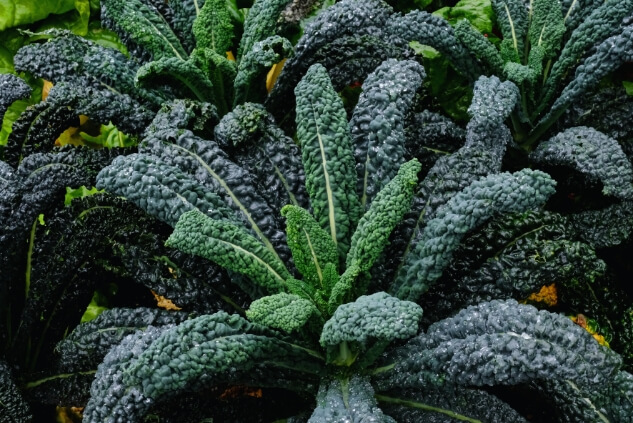
Proving itself resilient and reliable, Cavolo Nero is known for producing robust, textured, dark leaves on tall plants. They can grow over a metre tall and can be harvested all throughout winter.
Sometimes referred to as Lacinato Kale or Dinosaur Kale, Cavolo Nero originates in Tuscany where it’s been growing for centuries and is one of the traditional ingredients for authentic Italian minestrone.
This kale is grown equally for edible and ornamental purposes. The thick, embossed leaves of Cavolo Nero lend themselves to many dishes; perfect for soup and smothered with sauces.
This kale’s uniquely dusted, dark green or glaucous coloured leaves really stand out in mixed planting which makes it a firm favourite for kale growers.
2. Red Russian Kale
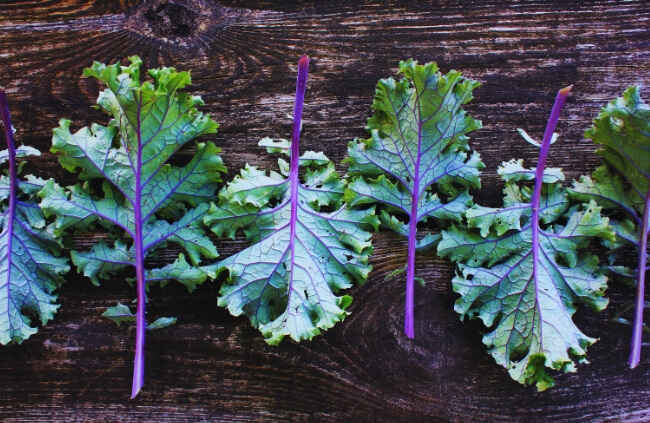
Beautifully tinged with reddish-purple, the Red Russian Kale has attractive, ornamental oak-shaped foliage which becomes darker and more intensified with colder weather.
Red Russian Kale will grow up to approximately 90cm tall and is known to have a sweeter flavour and be favoured by growers who grow solely for flavour. It’s also much more tender than other kale leaves.
Many kales are in the Acephala Group, Brassica oleracea, but Red Russian is in the Pabularia Group with its botanical name Brassica napus and are known as the Dutch or Siberian kales.
These kales are an ancient hybridisation of cabbages and turnips and are the most cold-hardy kales you can find.
3. Peacock Kale
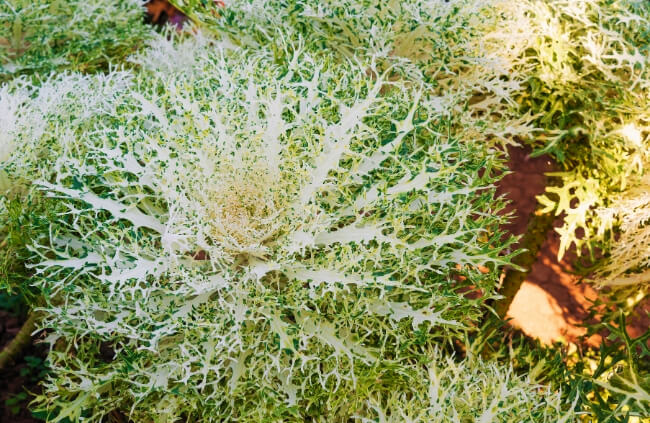
Peacock kale isn’t typically grown for edible purposes and doesn’t boast to have beautifully tender leaves. However, it’s highly decorative and can still be used on your plate so what’s not to love?
Producing uniform plants with a compact form, Peacock kale has feathery leaves which give the plants a delicate, ornamental feel. These dwarf kales grow up to 30cm tall and can be found in whites, pinks, reds and purples.
This is a perfect kale for your ornamental bed, bordering a path or mixed in with container planting.
4. Yurok Kale
This is the perfect kale for gardeners wanting the aesthetic of the handsome Cavolo Nero but lacking the space for it. Yurok is the first F1 Cavolo Nero-style kale, bred with the best qualities but able to be grown in much smaller spaces.
Yurok Kale will grow up to 75cm tall with a spread of around 50cm. Intensely crinkled leaves are held on robust plants and keep well without yellowing. This is one of the best for domestic growers. You rock Yurok.
5. Frost Byte Kale
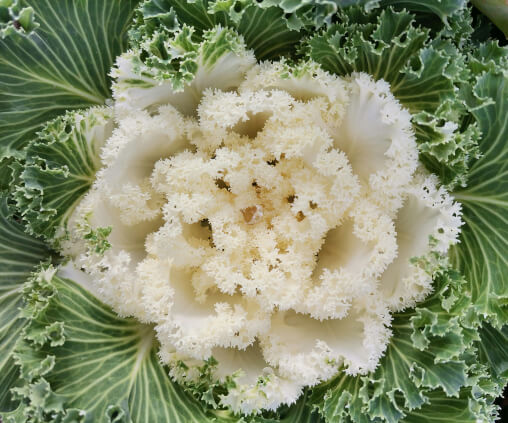
Another highly attractive kale with variegated, curled and ruffled leaves, emerging as brighter white and then turning to variegated green as they age. Fantastically crisp especially when cooked as chips, this kale is sweet and vitamin-rich making it a firm favourite with those kale enthusiasts.
During the colder months, Frost Byte Kale will become brighter white as the pigmentation in the newer leaves reacts to the temperature change, giving a brilliant frost-bitten look.
Reaching around 60cm tall and 40cm wide, this relatively compact plant is perfect for those colder regions where it will contrast and complement your other winter planting.
6. Jardin Kale
Jardin kales can be found in a range of colours such as Ivory and Crimson, and are addictively frilly. The fan-shaped leaves form a tight rosette, edged with those frills makes for a tempting and hard-to-resist hand scrunch; Jardin Kale is robust enough to add a tactile element to a sensory garden.
This kale is extremely winter hardy if left long enough without eating as Jardin kale is also very tasty. Often used as a garnish, Jardin kale will fit happily with your decorative planting amongst colourful flowers and bright beds.
7. Dwarf Green Curled Kale

Dwarf Green Curled Kale also deserves a place within the decorative kales. This foodie favourite has the most awesome leaves. This is definitely the frilliest of all the kales and it stands proud at 60cm tall showing off its perfectly formed domed habit.
This kale is so structural it’s almost like a vegetable topiary. Very winter-hardy and extremely robust against strong winds.
If you’re looking for a kale that will make the best chips, Dwarf Green Curled is the one for you. Torn up in a rustic fashion and lightly salted with a touch of oil, pop the leaves into an air fryer until crisp and enjoy!
8. Curly Scarlet Kale
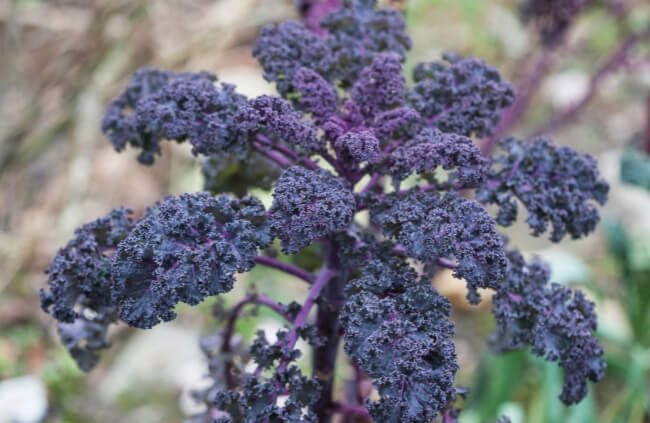
Beautifully coloured Scarlet Kale is tinged with reds and purples mottled on dark green leaves. With tightly frilled leaf edges, it’s one that you just have to touch and feel over and over.
Curly Scarlet’s colour can vary from totally purple or totally red to a striking mix of these, also altered by frost, giving the plant high interest in your borders.
One of the joys of darker red and purple kales like this is you can spot any caterpillars or typical kale pests a lot easier, and with frilly kales, those pests have a lot of hiding places.
Curly Scarlet Kale will grow up to around 90cm on strong, frost-resistant plants, perfect for the most ornamental places in your garden or plot.
9. KX1 Kale
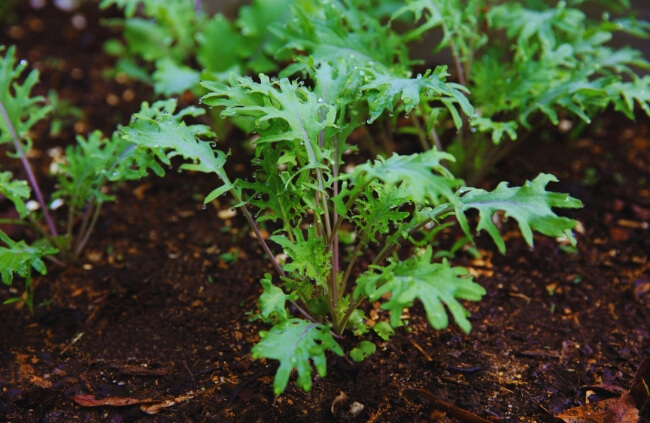
This unusually named kale is simply gorgeous, its name doesn’t do it justice. KX1 kale doesn’t grow very tall, just 30cm, so is typically grown to use as baby leaves. However, it’s good to use as cut-and-come-again leaves as it will regrow and produce more deep red, glossy leaves.
When the plant is left to grow to full maturity, the leaves of KX1 become thicker and more substantial, developing curls at their edges showing the leaves' bright green undersides.
It grows at a similar rate to Red Russian Kale, also being a Brassica napus variety. When planted en masse, it will produce an almost carpet-like covering of wine-red leaves with deeply toothed leaf edges.
The leaves of KX1 kale are sharply contrasted with its vivid green stems and leaf veins; this would be a brilliant kale for decorative beds.
10. Amara Kale
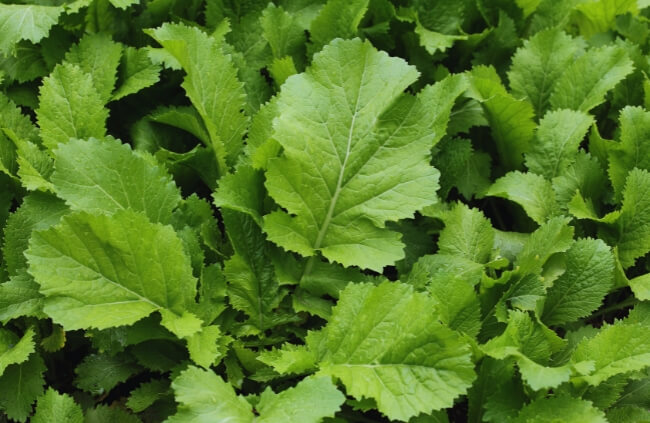
Also known as Ethiopian Kale or Texal Greens, this kale is technically a Brassica carinata and originally comes from Ethiopia. It is thought to be a hybrid of regular kale and African black mustard meaning it’s used to growing in warmer countries.
Varieties of this kale are developed to be more suitable for growing in temperate climates such as the ‘Texal’ variety. Amara kale is normally grown for cut-and-come-again baby leaves, noted to have an unusually mild, tender garlic taste. Where this kale may lack in interesting colours or textures, it makes up in flavour.
11. Redbor Kale
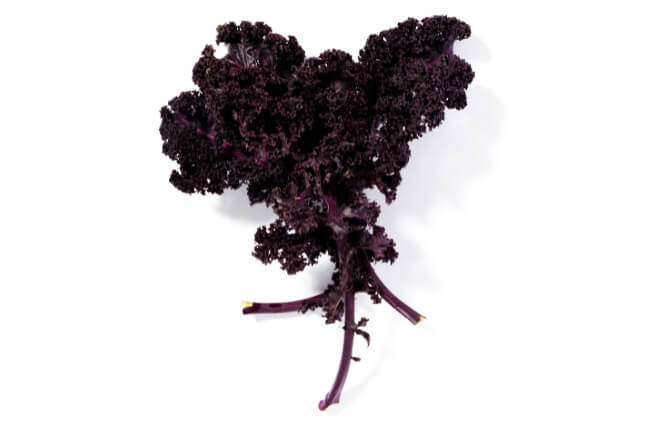
Redbor kale also has some fantastically ornamental leaves, deep red to purple in colour and will slot into your garden planting beautifully. This kale has a particularly good resistance to pests and diseases so is definitely worth its growing space on your veggie patch.
This is another small plant that is perfect for smaller spaces, only growing to around 60cm in height. Curled leaves with intensely frilled edges are held on purple stems. With the onset of colder weather, these leaves will turn a deep crimson and taste much sweeter, adding much-needed colour and homegrown flavour in winter.
Redbor would be a good alternative to Scarlet if you are growing in a windier environment as this shorted plant is much more stable and can withstand harsh weather without staking.
12. Buttonhole Starmaker Kale

This kale is one of the most decorative you can grow. Buttonhole Starmaker kale has vivid purple veining through the inner veining of leaves condensing at the central part of the rosette. Its dark green leaves highlight the intricate purple veining held on short 30-40cm plants.
However, Buttonhole Starmaker kale isn’t just bred for its aesthetic quality as it’s also considered a gourmet kale, selected for its sweeter and milder flavour. Its cup-shaped leaves are perfect for using as a healthier taco packed with all your favourite fillings.
Or simply steamed or stir-fried, this kale will add that true homegrown wow factor to your plate. Even grown just for its decoration, edging your borders would be a delight, but why waste those tasty leaves?
13. Midnight Sun Kale
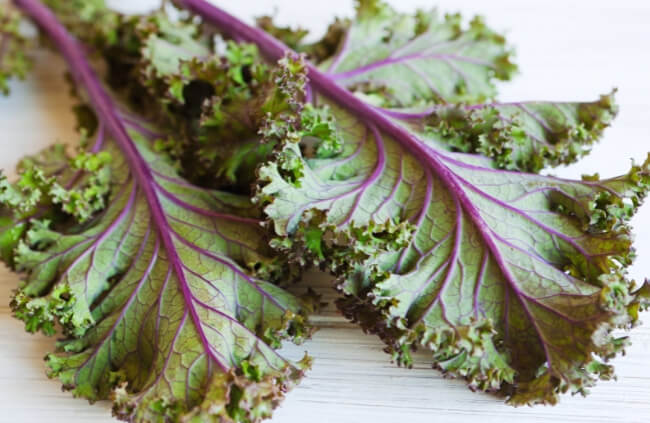
With such an evocative, dreamy name how could you resist growing Midnight Sun kale? This is an all-rounder kale; excelling in taste, tolerance and temptingly good looks. In fact it is said to have the best eating quality of all kales.
Midnight Sun kale will grow up to 90cm and display deep red-purple leaves with an electric pink vein that branches out of the centre of the leaf. It has a nicely curled and drilled edge, not as much as other kales, but enough to still lend itself to certain culinary dishes.
Noted to be excellent for both baby leaf and mature leaf usage. This kale is surely a winner for gardening and foodie enthusiasts alike.
14. Reflex Kale
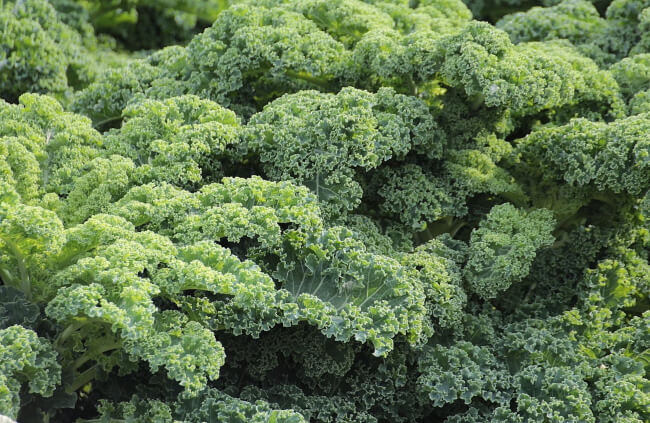
Bred from curled kales, Reflex kale is said to have more intensely curled leaves whilst retaining the succulent texture you want.
Reflex kales have good anti-yellowing leaves on lower down foliage meaning the plant will produce a good supply through its growing season. This kale will reach around 90cm tall with leaves reflexing backwards at the tips.
Older leaves will have a more visible central veining which can be bright white, but harder to see in more curled younger leaves. Younger top growth has a lovely, lighter shade of green fading into the larger darker leaves below, it almost looks like a little tree.
15. Rainbow Candy Crush Kale
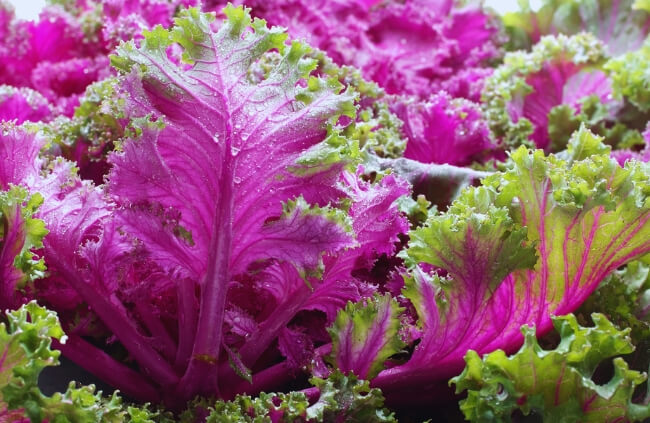
Rainbow Candy Crush kale is a marvel of kale breeding. Undoubtedly an ornamental kale, but also one of the best kales to grow for eating. It’s the ultimate edimental - or edible ornamental - plant.
It’s a bucket list kale. One you just have to have a go at growing. Rainbow Candy Crush kale has vivid pink central young leaves and stems, with the finest tips of dark green. As its leaves develop they take on a little more of the green colouring until the lowest largest leaves are basically all green with white veining.
Rainbow Candy Crush can technically grow to 90cm, but it’s bred for an abundance of leaves so will have a compact and dense form, widening at its base. Somewhat similar in size to a harvested cabbage adorned with its outside leaves.
You can just picture the harvest photo now, held up to your head for scale! It took over a decade to breed this beautiful kale, and it was worth the wait.
16. Emerald Ice Kale
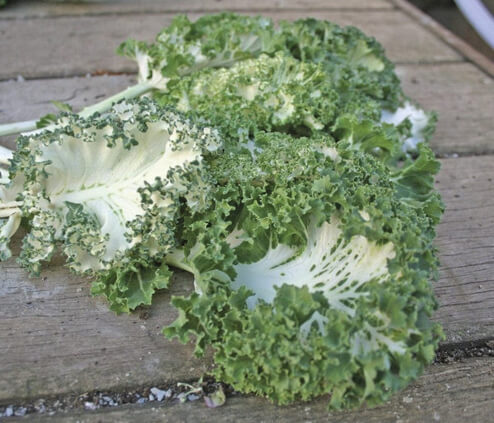
Image Source: Mr. fothergill's
The aptly named Emerald Ice kale produces thick and robust dark green leaves with striking white centres. The contrast between the two colours is condensed in the centre as the new, bright white leaves have a thin dark green outline.
These leaves look like they’re peppered with diamonds when it’s rained, with droplets sticking to the frilly green leaf tips. However, Emerald Ice kale tastes better than it looks, and it looks stunning. The leaves are exceptionally crunchy and sweet, perfect in fresh summer salads.
Overall Emerald Ice kale can grow to around 90cm tall and joins the group of best eating kale varieties as even its stalks are sweet, tender and delicious.
17. Cottagers Kale
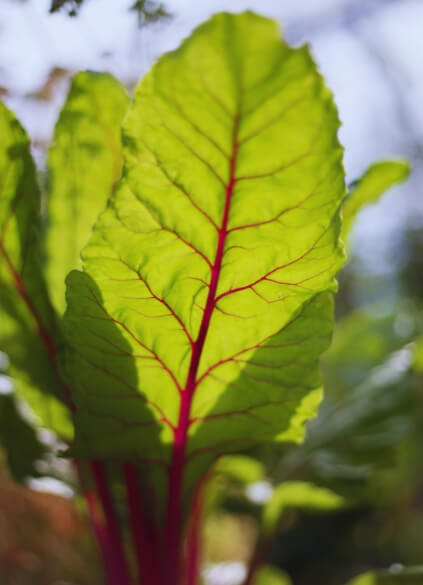
Cottagers Kale has an interesting history and is considered an heirloom kale variety. Originally bred by crossing kale and brussel sprouts which gives us the popular kalettes, then crossed again with purple sprouting broccoli.
This breeding has resulted in a kale that can crop for much longer than other kales, and given the right conditions, become perennial for up to 5 years.
Typically, Cottagers Kale has flat green leaves with a purple-coloured vein that runs through the centre to the stem and stalk. Its average height is around 90cm but this can vary.
It is thought that this staple of the 19th-century cottager’s diet fell out of fashion due to its leaves not storing well for commercial growing. However, domestically grown and picked straight from your own patch, this kale can serve you well for many years to come.
18. Northern Lights Kale
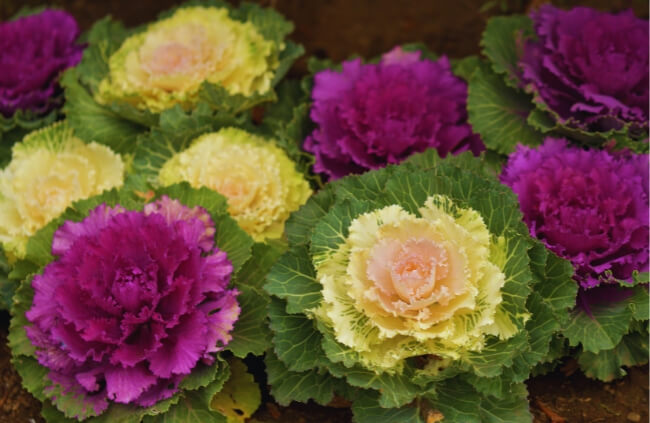
Also sometimes referred to as a fringed kale, these kales are used mostly for ornamental purposes. Northern Lights Kale can be grown in many different colours including Red, White, Pink and Purple.
Their overall height is around 25cm and they form a tight rosette of leaves that looks just like a beautiful, frilly flower head.
Although a kale such as this is labelled as ornamental, it is still technically edible. It just has a much more bitter taste compared to other varieties. Sometimes they serve the purpose of a delightful garnish if being used in the kitchen, rather than eating.
19. Daubenton's Green Kale

Image Source: The Backyard Larder
Kale sellers will often say that a single plant of Daubenton's kale can feed you for life and, with a few caveats this can be true. With large green leaves that can be slightly tinted with pinkish tips, this kale is another successful perennial that lost favour due to its short storage life.
However, Daubenton’s Green kale can be harvested 356 days of the year. It constantly produces side shoots creating a very bushy habit. Reaching a height of around 120-150cm, sometimes people call this variety a ‘Walking Stick Kale’ (not to be mistaken with the cultivar of the same name) as it becomes so tall and thick over the years of harvesting.
Doubenton’s Green is technically a Brassica ramosa variety, which means it has horizontal side growth that wants to root. Eventually, perennial kale can become exhausted, so plants tend to live for around 5 years. However, cuttings can be made very easily so you can have this same plant continuing to supply you with lovely leaves.
20. Walking Stick Kale
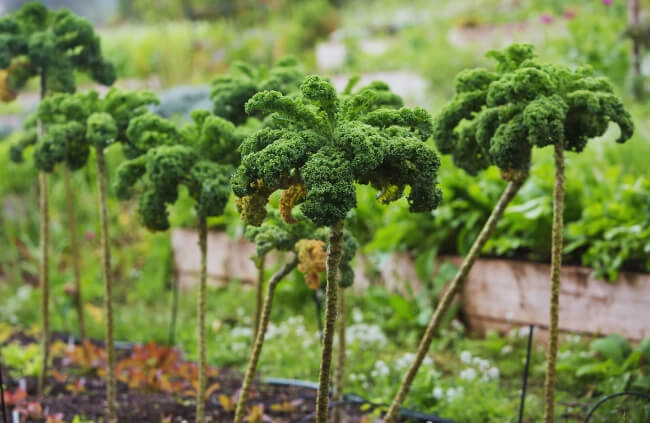
Also known as Giant Jersey Kale, Tree Kale and Giant Cabbage. This particular kale can grow as tall as 3m and even is recorded to have grown up to 6m tall. Jersey kale is said to have nutty-flavoured younger leaves and, generally, these are the ones to be eaten. The older leaves are often given as animal feed or composted.
It was actually grown to be used as walking sticks by stripping the lower leaves and feeding them to cattle, then encouraging the plant to grow tall without twisting. The plants were given a handle by either planting on an angle to produce a kinked root, or training the top section into shape to use as a walking stick!
21. Starbor Kale

Starbor kale is the one to grow for those smaller veggie patches. These kale plants can be grown closer together than other kale and have a shorter internodal spacing fitting more leaves onto the plant.
Overall this can give you a higher harvest in a smaller space than growing a few larger varieties.
Plants grow to around 60cm and have dark green, very curled and frilly leaves. Starbor kale is bred to be uniform so you’ll have consistency in crop size and quality.
22. Spigarello
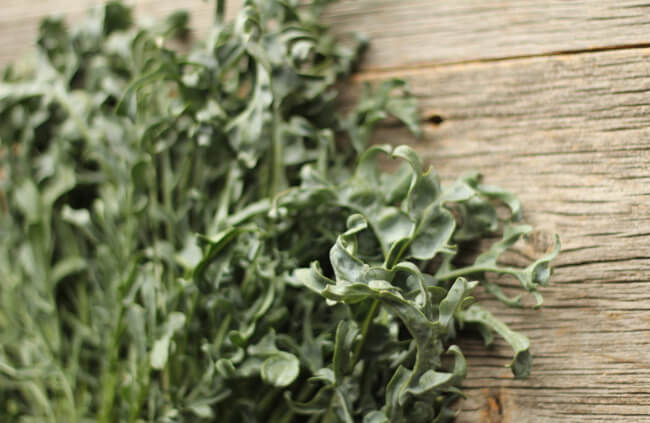
Image Source: grubmarket
The ancient parent of broccoli, Spigarello kale is more commonly used in the same way as a kale leaf rather than as broccoli. The plant produces long, ribbon-like leaves which can be straight and smooth or curly. It has a tender, succulent and crunchy texture with mild and sweetly grassy flavour.
Spigarello would be a perfect kale to use in place of spinach or chard.
23. Candyfloss Kale
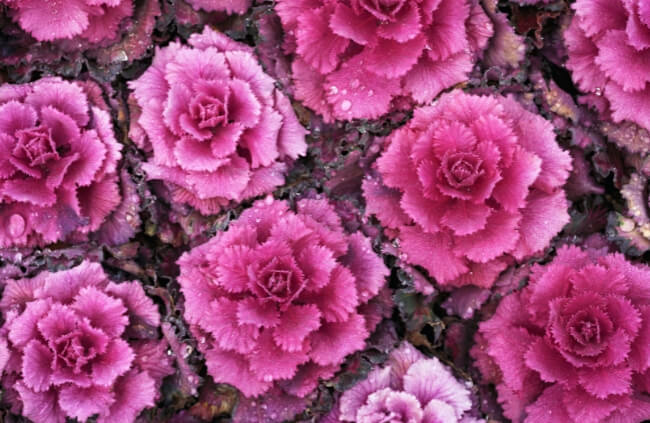
Candyfloss kale has a slightly more open habit than Rainbow Candy Crush, but forms a similar shape and size. It has fluffy pink and purple tones to the centre of the leaves which really live up to its Candyfloss name.
It has frilly and ruffled edges of the leaves with dark green tips highlighting the pink and purple leaves and pale lilac stems.
Perfect for eating and ornamental growing, Candyfloss kale will grow to around 90cm tall and form quite a wide plant so if you’re in a windy area you might want to stake for support.
24. Black Magic Kale
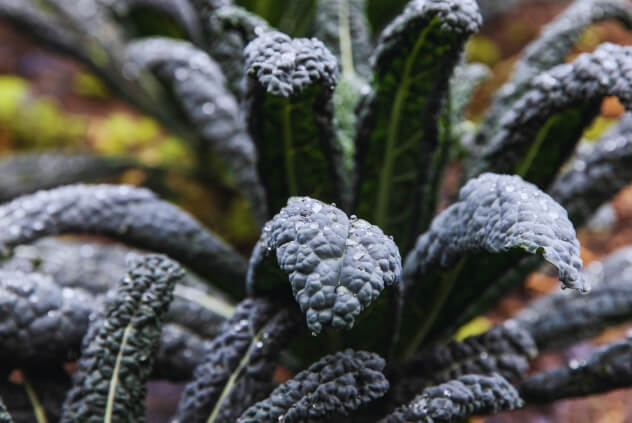
This is a variety of Cavolo Nero, bred specifically for colder climates. Black Magic Kale is said to have improved frost tolerance through prolonged cold weather, and also be resistant to bolting under stress.
Black Magic Kale also boasts new and improved darker colour and leaf shape. So if you’re in a colder region this might be a better choice, rather than the traditional Italian-bred Cavolo Nero. It can be used as a baby leaf crop or left to grow to full maturity where plants and leaves are more uniform.
Black Magic Kale is well suited to smaller spaces, growing shorter than Cavolo, to just 60cm, and would benefit container gardeners or those with smaller spaces generally.
25. Fizz Kale

A great name for a great kale. Fizz kale is fast-growing and very winter-hardy, not to mention incredibly pretty. With unusual leaves that have deeply lobed edges, its foliage is similar to a globe artichoke at first sight. Leaves are flat and emerald green with a greyish hue, perfect when young for salads.
Picked young enough, the leaves of Fizz kale could be mistaken for wild rocket. Plants can reach around 40-60cm tall making for a gorgeous front to middle border plant. Fizz kale is unique and has a beautiful and delicate ornamental feel.
Growing Different Types of Kale
Part of kale's succession is down to it being one of the easiest things you can grow in your veggie patch. First, sow your chosen seed into peat-free compost. Seed should be sown in July in northern Australia, those in warmer areas should sow in autumn, winter or spring.
Once large enough, plant your kale in its final position, this can be within your ornamentals, edibles or even in containers and pots. Kale prefers rich but well-drained soil with good root structure as some of these plants can get large and will need firm ground.
A good tip with all brassica is to firm your plant in well, as they like their roots to feel stable. Generally, kale isn’t too fussy about its soil pH, but its ideal conditions would be slightly alkaline.
Partial shade is tolerated but you will get much healthier plants when grown in a sunnier position if possible. Failing this, a good-sized container can house your kale nicely and can be moved towards the sun when needed.
When we grow kale here we tend not to stake our plants as the wind will toughen the stems and the plants will stand up by themselves better. If any harsh weather is around the corner, temporary staking can help your plants stay upright as they can become very top-heavy.
Caring for Your Favourite Kale
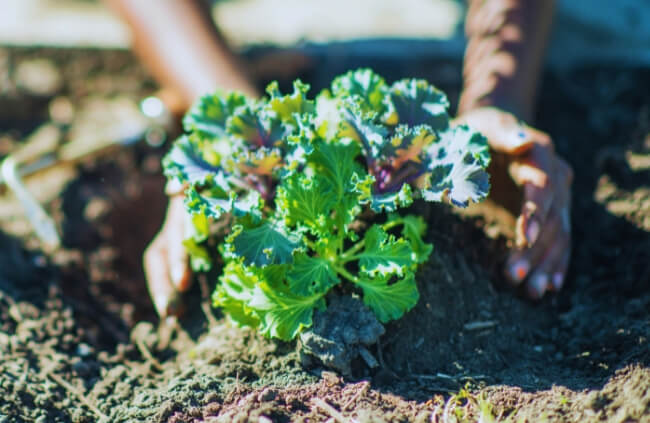
Kale always benefits from a good feed even if you have added compost when planting. Using a balanced fertiliser like chicken manure or tomato feed will give your kale plants the boost they may need halfway through the growing season.
Watering should be consistent and topped up in dry weather, so consider using a good layer of mulch around each plant to lock in moisture. Keeping your kale well-watered and fed will ensure a constant supply of the healthiest leaves for your plate.
Generally speaking, there isn’t a need to prune your kale, but it can fall victim to aphid infestations. It’s wise to remove these leaves and discard, as washing the leaves can take longer than it’s worth!
Pro Tips for Growing Kale at Home
To deal with any aphids or caterpillar eggs, use a strong hand sprayer and spray the underside of leaves to dislodge anything that might want to eat your leaves before you get there!
For more tips and in-depth details on growing and caring for your kale, including how to plant, propagate, store and harvest these incredibly beautiful edibles, check out our ultimate kale growing guide.
Harvesting and Storing Kale
Harvest your kale by removing leaves from the outside of the plant first, or the leaves lower down. Take what you need, leaving enough for the plant to photosynthesize. Harvesting this way will keep your kale growing upwards (if the variety allows) and producing more tender leaves.
We tend to harvest what we need, and eat it the day it’s harvested, but you can also harvest a bunch and store it in the fridge. Wrap your kale leaves in paper towels and seal them in an airtight bag, this should help stop your leaves from becoming soggy.
Final Thoughts on Different Types of Kale
Even if you're not a fan of eating kale raw, cooked or smothered in a buttery sauce, I defy you to not fall in love with some of the colourful varieties like Candy Floss or Rainbow Candy Crush. These florets of colour wouldn’t look out of place in the most ornamental of gardens, they even crop up in floral bouquets.
Kale is a feast for wildlife too. Just planting kale for the butterflies alone will ensure your garden is confettied with cabbage white butterflies, among others. These plants will blend into your borders beautifully and with so much choice there will definitely be several types of kale worth planting in your own plot!
Published on June 8, 2025 by Gary Clarke
Last Updated on October 14, 2025




